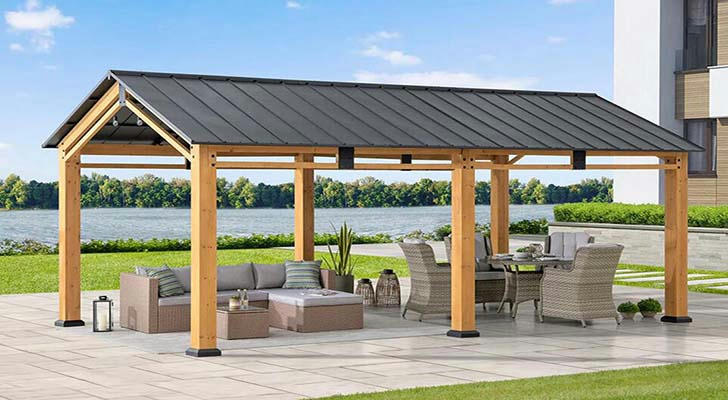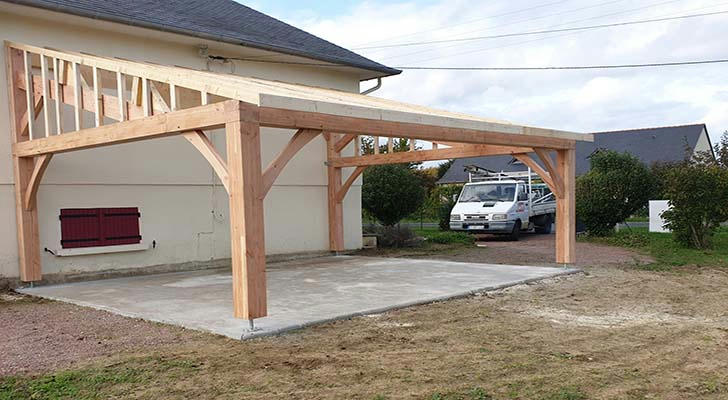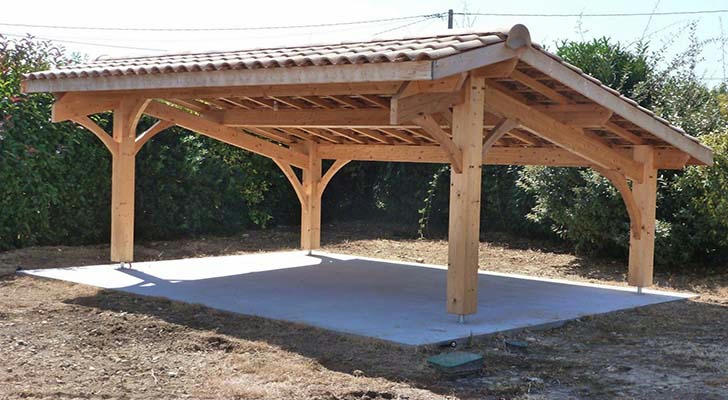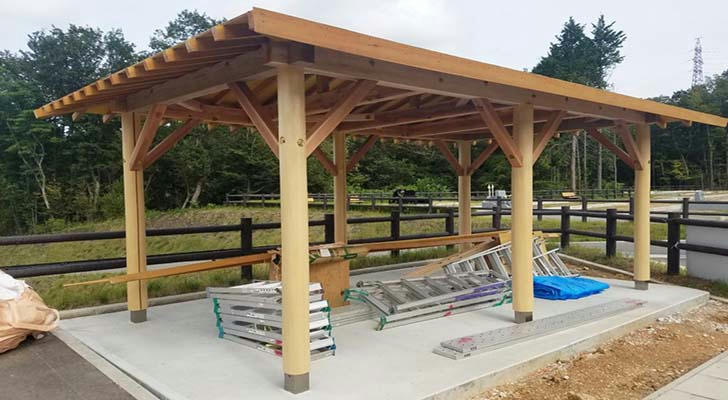Make your garden more beautiful, starting with a gazebo

In modern gardening design, the garden is not only a habitat for plants, but also an ideal space for people to relax and enjoy nature. As an important element in the garden, the gazebo not only adds visual beauty, but also provides people with a comfortable place to rest. Whether it is a traditional wooden gazebo or a modern minimalist metal structure, the gazebo can be the finishing touch of the garden, attracting attention and arousing curiosity. They not only add a sense of hierarchy to the garden, but also can be an ideal place for family gatherings, friends gatherings or thinking alone.
There are various types of gazebos, mainly including the following:
1.Traditional wooden gazebo
This gazebo is usually built with natural wood and has a classic look, suitable for country or traditional style gardens.
2.Modern aluminum gazebo
Aluminum gazebos are lightweight and corrosion-resistant, often used in modern style courtyards, providing simple lines and a variety of color options.
3.Foldable gazebo
This gazebo is easy to store and move, suitable for temporary use, such as outdoor parties or activities.
4.Gazebo with a roof
Gazebos with a solid roof provide better shade and protection from rain, and are suitable for all climates.
5.Garden gazebos
Usually smaller, they are suitable for leisure spaces or decorative embellishments in the garden.

How to choose the right gazebo
1.Space size
Determine the available space in your garden and choose a gazebo of the right size to avoid crowding or empty spaces.
2.Material selection
• Wood: traditional and beautiful, suitable for country style, but requires regular maintenance.
• Aluminum or steel: modern and durable, highly corrosion-resistant, suitable for all climates.
3.Design style
Choose a gazebo design that matches the overall style of your garden, such as classic, modern or country style.
4.Functional requirements
Consider the purpose of the gazebo, such as whether it needs shade, shelter from rain or as a gathering place.
5.Budget
Choose the right gazebo according to your budget, and there are many price ranges available in the market.
6.Installation and maintenance
Make sure the selected gazebo is easy to assemble and maintain, and avoid overly complicated structures.
By considering these factors together, you can find the gazebo that best suits your garden and needs.

Design and layout of pavilion
1.Location selection
Lighting and view: Choose a location with moderate lighting and wide view so that you can enjoy the surrounding natural landscape.
Ground conditions: Make sure the ground is flat to facilitate the stable installation of the pavilion.
2.Design style
Coordination with the environment: The design of the pavilion should match the surrounding environment and architectural style, and choose appropriate materials and colors.
3.Space layout
Consider the space layout inside the pavilion and decide whether to place sofas, tables and chairs or other furniture.
4.Functional planning
• Purpose determination: Clarify the main purpose of the pavilion, such as using it as a leisure area, dining area or entertainment space.
• Additional functions: Add veils, outdoor floors or other supporting facilities as needed to enhance the user experience.
5.Plant matching
Surrounding plants: Choose suitable plants to match and increase the natural atmosphere of the pavilion. You can choose climbing plants or flowers.
Maintenance and maintenance of the pavilion
1.Regular inspection
• Structural stability: Regularly check the structure of the pavilion to ensure that there are no loose or damaged parts.
• Roof and drainage: Check whether the roof is leaking and ensure that the drainage system is unobstructed to prevent water accumulation.
2.Cleaning
• Surface cleaning: Use mild soapy water and a soft brush to clean the surface of the pavilion regularly to remove dirt and dust.
• Remove mold: In a humid environment, pay attention to the removal of mold and algae, and you can use a special cleaner.
3.Coating maintenance
• Anti-corrosion treatment: For wooden pavilions, apply preservatives regularly to protect the wood from moisture and insect pests.
• Repainting: If necessary, repaint or coat regularly to maintain the appearance and protect the material.
4.Seasonal maintenance
• Winter preparation: Before the cold season arrives, clean up the debris inside and outside the pavilion, and consider covering the protective material to prevent snow pressure.
• Summer protection: When the summer temperature is high, you can consider using sunshade cloth or curtains to reduce direct sunlight.

Conclusion
The pavilion is not only a beautiful landscape in the garden, but also an important space for people to enjoy outdoor life. Through reasonable selection, careful design and layout, and regular maintenance and care, you can make the pavilion a highlight of the garden and enhance the overall beauty and practicality. Whether it is sharing good times with family and friends, or enjoying quiet reading time alone, the pavilion can provide you with a comfortable environment.
